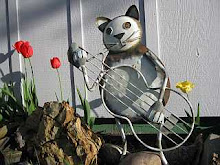 I have an electric water heater and it appears the upper heating element or upper thermostat isn't working. Therefore I have cool water which feels cold when I take a shower. Which means my showers these days are really quick! Cold showers, and I don't even need to take any.
I have an electric water heater and it appears the upper heating element or upper thermostat isn't working. Therefore I have cool water which feels cold when I take a shower. Which means my showers these days are really quick! Cold showers, and I don't even need to take any. 
I am in a quandary what to do about my hot water heater. I think the heater is old - very old. I wouldn't be surprised the heater is 40 years old, put in when the house was last remodeled.
The heater's age would make it a candidate for buying a new heater, especially as new water heaters are more energy efficient. And now that the house has natural gas I could switch over to a natural gas heater if I extend the gas line to that side of the house. Apparently gas heaters are cheaper to operate than electric ones.
But... the water heater is in the entry way and a cabinet was added later blocking part of the access to the water heater. What is worse is that the cabinet has a sink in it, and that means pipes for plumbing. I checked the pipes and they seem to have been put in the cabinet via holes with no intention of ever removing them easily. I may have to cut some of the pipes as they are soldered.
Therefore I may try to see if I can just replace the bad heating element and/or thermostat.
I don't know. I'm still trying to decide if I need to call an electrician or a plumber. I do know whatever is done it will be a hassle as even replacing the heating element means draining the water heater. My heater is so old it doesn't have a drain valve. I looked and could not find one. *sigh*
Here are views of the location and of the non-working thermostat and heating element.




No comments:
Post a Comment